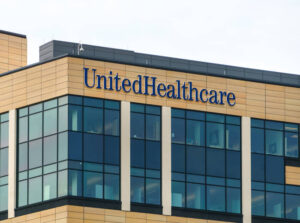Medicare Advantage Expenses Drive Forecast Revision: What Investors Need to Know
At Extreme Investor Network, we bring you insights that matter, helping you make informed investment decisions. In the latest developments, UnitedHealth has revised its earnings forecast for 2025, and the implications for investors are significant.
UnitedHealth’s Sharp Earnings Downgrade
UnitedHealth has announced an adjusted earnings estimate for 2025, now projecting a range of $26 to $26.50 per share—a notable drop from its previous forecast of $29.50 to $30 per share. This revision comes as a shocker, especially considering analysts had expected an average of $29.73 per share according to data from LSEG.
The primary reason behind this downgrade is unexpected high levels of care utilization, particularly in physician and outpatient services for seniors enrolled in Medicare Advantage plans. The surge in demand for these services has increased operational costs, which UnitedHealth had not anticipated.
Alongside this, the company has seen changes in its Optum Health membership profile. The minimal engagement of beneficiaries in certain markets being exited has put additional pressure on projected reimbursement rates, compounding the financial strain.
First Quarter Results: The Operational Challenges
In its Q1 2025 report, UnitedHealth demonstrated revenue growth, raking in $109.6 billion, compared to $99.8 billion in the same quarter the previous year. However, the profit margins tell a different story, with the net margin narrowing down to 5.7%.
The medical care ratio climbed to 84.8%, compared to 84.3% in Q1 2024. This increase underscores the impact of Medicare funding cuts and a higher proportion of senior care services.
On the operational front, claims payable days decreased to 45.5, largely due to changes surrounding Medicare Part D timing. Encouragingly, the operating cost ratio improved from 14.1% to 12.4%, thanks to technological efficiencies and lower administrative expenses.
Despite these challenges, UnitedHealth still managed to generate $5.5 billion in operating cash flow, returning $5 billion to shareholders in the form of buybacks and dividends.
Segment Growth: A Mixed Bag
In terms of segment performance, UnitedHealthcare reported revenues of $84.6 billion, reflecting a $9.3 billion year-over-year increase. However, this growth was overshadowed by heightened activity in senior care services.
While UnitedHealth gained 700,000 new members in its commercial self-funded segment, it faced challenges in the individual exchange market, where pricing pressures led to membership attrition. On a positive note, Medicaid-related membership saw growth, reaching 7.6 million, with significant expansions in key states like Kentucky, New York, and Florida.
Market Forecast: Bearish Near-Term Outlook for Health Insurers
The downgrade of UnitedHealth’s outlook is a significant indicator of the broader cost challenges plaguing the health insurance sector, particularly in government-backed plans. The mix of persistent demand for care and ongoing reimbursement issues suggests a continued strain on profit margins.
For investors, this sentiment reinforces the need for caution in the health insurance sector. As the landscape evolves, adopting a bearish bias until cost normalization becomes apparent may be prudent.
Final Thoughts
At Extreme Investor Network, we understand that navigating the ups and downs of investment trends can be challenging. With the health insurance market facing headwinds, staying informed and making strategic choices will be essential for successful investing in the coming months. Stay tuned for more insights, and as always, invest wisely!

